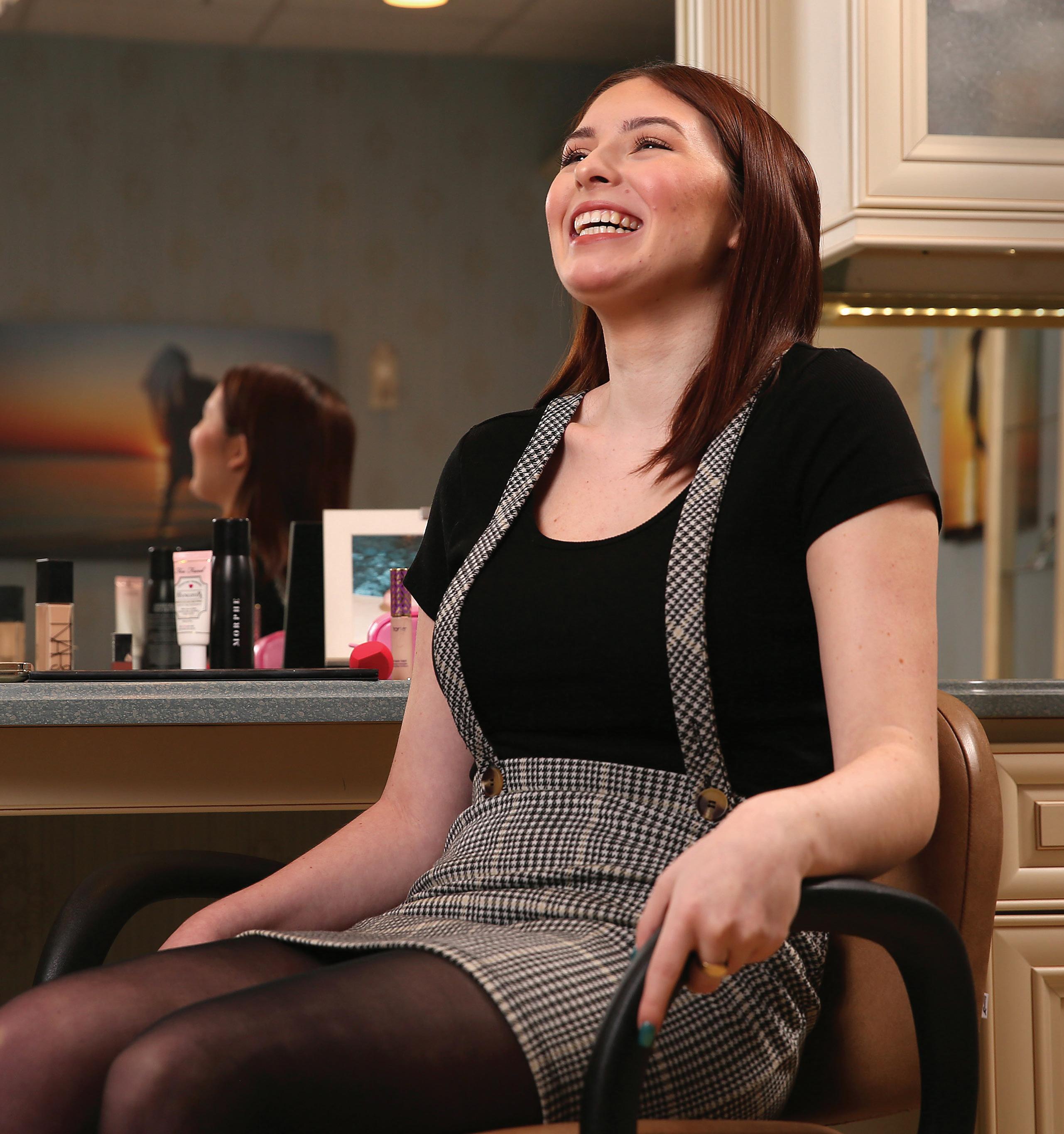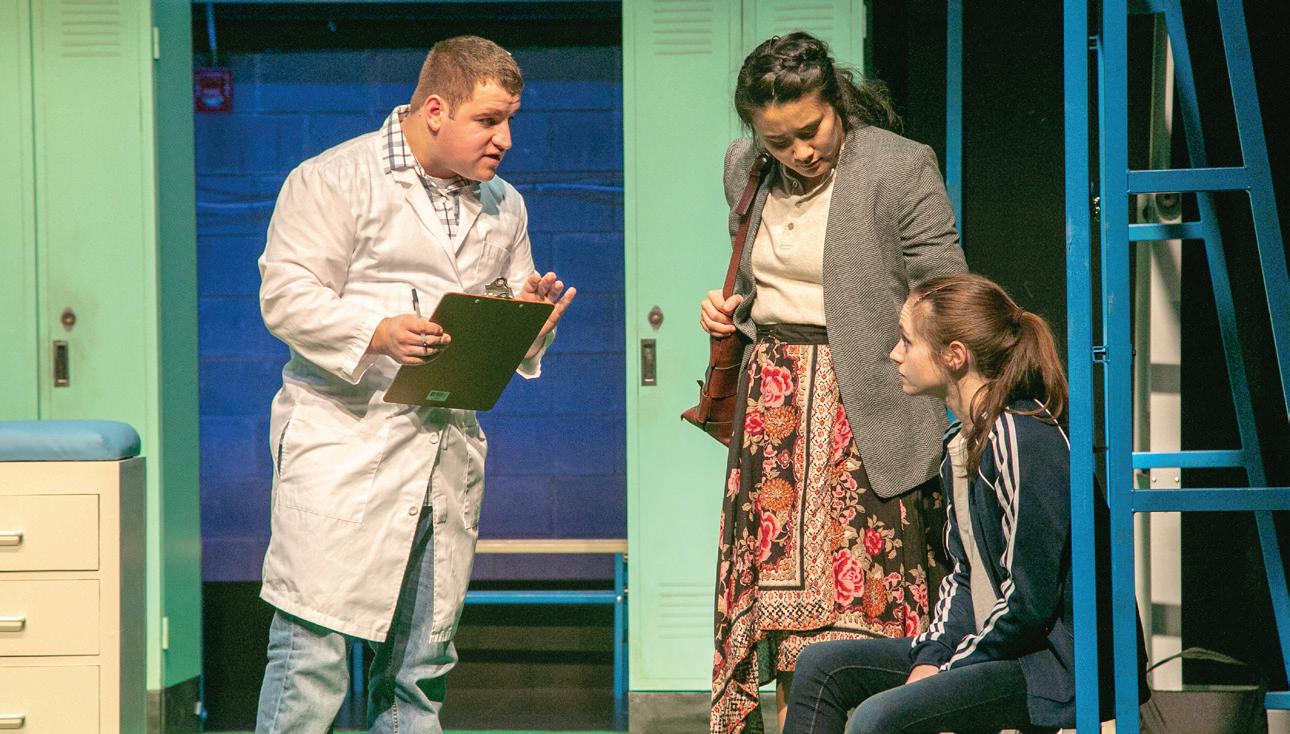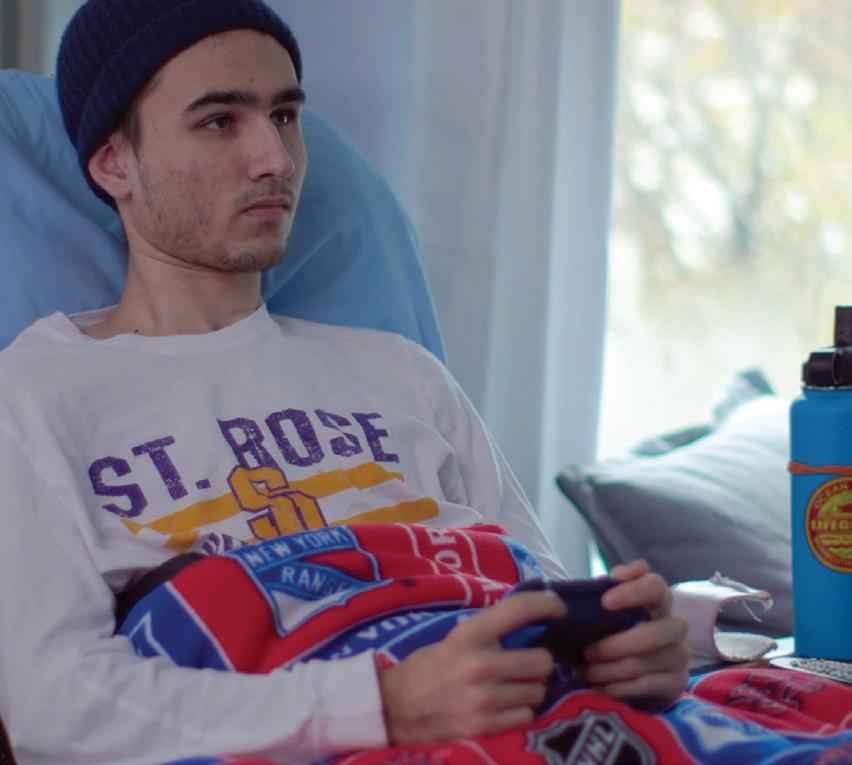
4 minute read
STAYING POSITIVE
Breast cancer patient Sherri Itte with her daughter, Jaclyn, who accompanied her to her chemotherapy sessions.
RWJBarnabas Health and Community Medical Center, in partnership with Rutgers Cancer Institute of New Jersey—the state’s only NCI-Designated Comprehensive Cancer Center—provide close-to-home access to the most advanced treatment options. Call 844.CANCERNJ or visit www.rwjbh.org/beatcancer.


HOW ONE BREAST CANCER PATIENT KEPT HER HAIR— AND PART OF HER IDENTITY—DURING CHEMOTHERAPY TREATMENTS.
In January, Sherri Itte of Lacey Township was diagnosed with breast cancer. She had triple positive invasive ductal carcinoma, which meant the cancer’s growth was fueled by hormones. “I was in shock,” says Sherri, 50, a nurse at Easterseals New Jersey, a program for people with disabilities. “I thought, ‘I’ll do whatever I have to do to get rid of it.’” Fortunately, the cancer was caught early; it was considered Stage II.
One week later, Sherri had a lumpectomy to remove the tumor, which had been hidden in dense breast tissue. She needed chemotherapy and radiation, so her breast surgeon recommended several oncologists. Sherri chose Jessica Taff, MD, a hematologist/oncologist at Community Medical Center (CMC). “She made me feel optimistic,” says Sherri. “She said, ‘We’ve got this. Everything is going to be okay.’”
MINIMIZING HAIR LOSS
During Sherri’s first appointment, Dr. Taff described her treatment plan in great detail, even using diagrams to illustrate her approach. “I felt confident I had chosen the right doctor,” recalls Sherri. “I’m a religious person, and I felt that God had sent me to Dr. Taff.” Sherri knew she could lose her hair during treatment, and she told Dr. Taff that keeping it was important to her. “I didn’t want pity,” she says. “I wanted people to be strong for me.” Dr. Taff explained that Sherri could use a device known as a “cooling cap,” which cools the scalp and minimizes hair loss during treatment. “Losing your hair is one of the most emotional aspects of cancer treatment,” says Dr. Taff. “Sherri has a full head of beautiful blonde hair, and it’s part of her identity.” Chemotherapy drugs work by destroying rapidly JESSICA TAFF, MD dividing cells in the body, including hair follicles. Lowering the temperature of the scalp through a cooling cap reduces blood flow to hair follicles, resulting in less exposure to the chemotherapy drugs. This prevents or minimizes hair loss. Sherri needed six chemotherapy treatments three weeks apart, along with immune-based therapy, which would target a specific part of her cancer cells. Sherri would be the first CMC patient to use the Paxman cooling cap system. “I’ve used similar technologies since I was in training, and this is the best system I’ve seen,” says Dr. Taff.
Sherri started chemotherapy on March 27, just as the pandemic was beginning. “It was scary because I had a weakened immune system, but I had to start treatment quickly to improve my chances of success,” she says. “Fortunately, I felt very safe at CMC.” On the first day of treatment, Sherri put on the cooling cap, which resembles a bike helmet, at the same time she received medications that are given at the start of each chemotherapy session to reduce the side effects. She dampened her hair, then slathered on conditioner to prevent the cap from sticking to her hair. “It felt like I had ice packs on my head,” recalls Sherri. “It was like the feeling you get when you enter a pool and the water is cold. After about 10 minutes, I got used to the temperature. It wasn’t uncomfortable.” After each seven-hour treatment session, Sherri kept the cap on her head for an additional hour and a half.
Sherri was able to wash her hair, but she was advised to use chemical-free shampoos (the cap’s manufacturer sent her special shampoo and conditioner). She washed her hair once every three days. “My hair became thinner, but no

Sherri Itte wore the cooling cap during each of her six chemotherapy sessions.
one knew it aside from the people close to me,” she says. “I felt like myself, and people didn’t know I had cancer.” Luckily, Sherri didn’t experience many side effects from chemotherapy. “I was tired, and my appetite was off on the days I had treatments,” she says. “I also had some nausea, but I only vomited twice.” Still, she was able to play basketball, cornhole and Wii with her kids, and she took walks. In July, Sherri completed chemotherapy. Afterward, she began seven weeks of radiation treatments.
The cooling cap costs about $1,600, but it’s not routinely covered by insurance companies. Fortunately, the CMC Foundation covers part of the cost, and HairToStay, a nonprofit organization, provides financial assistance for patients who qualify. Sherri paid only $500 for the treatment. “It was well worth it,” she says. “Any wig would have cost at least that.”
Dr. Taff was pleased with Sherri’s response. “Sherri is a great example of how patients can take back some control during a frightening cancer diagnosis, starting with hair preservation,” she says.
To learn more about cooling caps, ask your physician or visit www.cmccancer.org.










